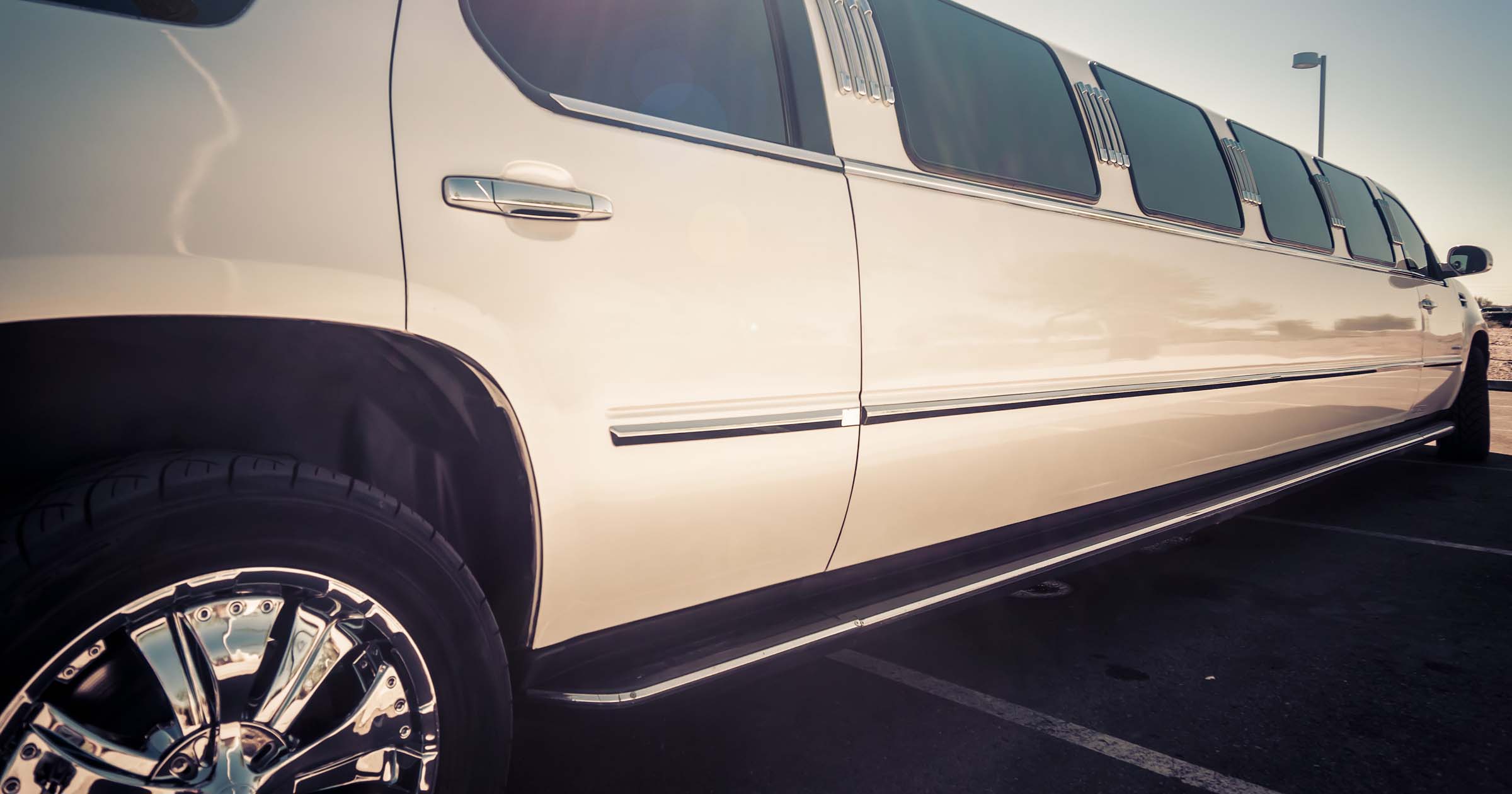How to Start and Grow a Limo Business in 2024

Limos are glamorous. Running a limo business, however, is less glamorous and requires hard work and planning. Limousine companies must navigate multiple routes and schedules, rising fuel costs, and various licensing requirements in order to run orderly, cost-effective companies.
Whether you’re thinking of starting a new limousine service or want to scale an existing one, the key to the success of this business idea lies in maximizing efficiency.
Jump to the section that interests you most:
- Why Start a Limo Business?
- What Are the Costs of Starting a Limo Business?
- What Business Licenses and Permits Are Required to Start a Limo Service?
- What Are the Challenges of Running a Limo Business?
- How to Support the Growth of Your Limo Business With OptimoRoute
- Efficiency Is Key
Why Start a Limo Business?

With the right business strategy and efficient operations, starting a limousine business can be a highly lucrative endeavor. The taxi businesses and limousine industry is growing. According to Statista, the market size had been steadily trending upward for the past several years until it saw a pandemic-related dip in 2020. Now, transportation businesses are seeing a recovery—taxi and limo businesses brought in $49.45B in 2020 and are projected to be worth $59.8B in 2021.
This recovery is related to an increase in demand for limo services as travel and events resume post-pandemic. Both large and small businesses in the limo industry are beginning to witness pre-pandemic numbers once again; indeed, this past May, the president of the National Limousine Association said the association was seeing a 20% increase in business per week.
Limo business owners have multiple target markets and customers, from business clients who require airport transfers to event clients who request special transportation for weddings, proms, and other special occasions.
In a growing industry with multiple use cases, limo business owners could maximize their profits with the right systems and processes in place.
What Are the Costs of Starting a Limo Business?
Several costs are associated with starting a limousine car service, from hiring drivers to paying for fuel. Creating schedules and routes that are as efficient as possible help keeps costs low.
In general, there are two main types of costs to your limo company: costs related to your fleet and costs related to your team.
Fleet costs
The first item you’ll likely purchase as a limo business owner? The vehicles themselves. How much you’ll spend on your own limo depends on the target size of your business and the type of vehicles you plan to purchase.
There are a few types of limousines available—for example, regular town cars, iconic stretch limos, or larger party buses. Brand-new limousines cost about $90K on average, while used ones can cost anywhere from $10K-$50K, depending on size, style, and mileage.
Once you’ve purchased your limos, make sure to save some room in the bank for insurance and maintenance costs. You’ll also need the proper insurance policies for each vehicle in your fleet, which can cost $5K-10K per vehicle every year. Plan ahead to make sure you have a cushion of several thousand dollars, which can take care of ongoing vehicle maintenance costs to ensure your fleet stays safe.
Fuel is a recurring cost for limo business owners, and its price will vary depending on your vehicle’s make and model. Some limousines take regular gasoline, while others require diesel fuel. In general, it will be imperative to keep your fuel costs as low as possible in order to maximize your profits.
Team costs
The cost of hiring and managing personnel represents a significant portion of a limo business’ budget. While the going rate for limo drivers varies by city and state, the nationwide average salary for limo drivers in the US is $19 per hour.
You can’t run an effective limo business with just drivers on the road, however. You’ll also need to hire dispatchers to take customer calls, book trips, and handle scheduling for your team of drivers. Nationally, the average hourly rate for a limo dispatcher is $17 per hour. Also, don’t forget smaller costs like business cards or company credit cards that are often given to each driver.
When starting a limo business, it’s important to use your team’s time efficiently. Software that assists your in-house team can ultimately save personnel costs because it takes fewer people fewer hours to complete the tasks that are essential to running your business.
What Business Licenses and Permits Are Required to Start a Limo Service?
While specific licenses and permits vary by state—and you should check with your local DMV to confirm what your state requires—it’s a guarantee that you’ll have to follow certain requirements in order to get your new business off the ground. These might include:
- Getting Commercial Driver’s Licenses for your team and plates for your fleet, depending on the size of your vehicles and the requirements of your state. In Massachusetts, for example, drivers need commercial licenses if they’re driving 14 or more passengers.
- Acquiring a Certificate of Authority, which details your business’ most salient legal information, if you plan to travel across state lines.
- Ensuring you have livery insurance or a special kind of auto insurance for livery—i.e., limousine, taxi, ride-sharing, etc.—businesses.
- Depending on your state’s requirements, your drivers may need a chauffeur’s endorsement on their licenses.
What Are the Challenges of Running a Limo Business?
When running a limo business, multiple challenges can arise—and most relate to inefficient operations that lead to longer routes, fewer customers served, and more fuel used. These challenges often fall into one of several categories, including route planning, customer service, maintaining capacity, and team and fleet oversight.
Route planning
Manual route planning and scheduling are incredibly time-intensive for your in-office team, and it often creates suboptimal, inefficient routes for your drivers. This can lead to longer trip durations, higher fuel costs, and, ultimately, the ability to serve fewer clients in a given day.
Customer service
Clients who’ve hired your limo business expect white-glove service—and they’re often on a tight schedule, whether they’re heading to the airport or their wedding. This means lateness simply isn’t an option for your team. Inefficient route planning, however, can lead to a domino effect of problems, which can damage your brand’s reputation.
Maintaining capacity
A persistent challenge for limo businesses is maintaining capacity as much as possible. Limos aren’t taxis or Ubers—they’re not typically scheduled last-minute. This makes downtime frustrating for business owners—and makes it all the more imperative that companies can maximize the number of potential customers they’re able to serve on a given day.
Team and fleet oversight
Transparent insight into how your team is performing is crucial to optimize your operation. Without dedicated software, though, it’s tough to keep track of where your drivers are and when. A problem with just one driver can lead to a poor customer experience, inefficient routes, and a lower volume of customers served.
How to Support the Growth of Your Limo Business With OptimoRoute
At every stage, it’s imperative that limo business owners maximize efficiency in order to drive profitability. OptimoRoute can help you tackle the challenges inherent to running a limo business by optimizing route planning, offering customers the ability to track orders in real time, allowing for last-minute scheduling, and providing transparent and automated insight into your team’s performance.
Route planning
OptimoRoute automatically creates more efficient routes for your drivers. This allows your in-house team to spend fewer hours poring over inefficient manual schedules, maximizes the number of trips your drivers can make in a day, and minimizes fuel costs. With route optimization software like OptimoRoute’s, you could save up to 20% in mileage—which means faster trips, less fuel used, and more opportunities to serve more customers.
Optimal route planning also helps your dispatchers manage their tasks and their teams more effectively. OptimoRoute’s dispatch management tools help dispatchers retain good drivers by creating optimized routes for them and maintaining balanced workloads across the team.
Customer service
Clients often use limo services to get to and from important events. With OptimoRoute, you can offer clients Realtime Order Tracking, which gives them the ability to track their limo’s arrival just as if they were using Uber or Lyft. When you plan routes and schedules with OptimoRoute, you can easily send customers a notification email confirming their scheduled pickup time, as well as any other pertinent information, like contact details. The email also contains a link to a tracking page, where customers can see their limo’s ETA and a real-time arrival countdown.
This level of transparency conveys your brand’s commitment to ensuring an excellent customer experience and arriving on time—and it can be a key differentiator when compared to other limo companies, which might leave their customers in the dark.
Maintaining capacity
You can make the most of downtime by scheduling last-minute clients with OptimoRoute’s dynamic replanning functionality. A purely manual route management system can’t adjust easily to last-minute cancellations or new order requests, which can hurt your business in the long run. Dynamic replanning tools, however, allow you to make real-time adjustments automatically, so you can maximize your capacity and easily handle any unforeseen bumps in the road.
Team and fleet oversight
OptimoRoute makes dispatchers’ jobs easier by allowing them to account for Pick up and Delivery meaning that a dispatcher can easily combine passengers being picked up and dropped off in the same route – without the limo needing to come back to the depot. That level of advanced planning allows limo businesses to stay competitive and further reduce unnecessary miles driven while making sure that two passengers never meet in the back of the car.
Efficiency Is Key
Starting a successful limo company takes much more than purchasing high-end vehicles and assembling a team of drivers and dispatchers. To maximize success, limo company owners need to serve as many clients as possible while offering an exceptional customer experience, closely overseeing drivers, and minimizing fuel costs.
That’s a pretty tall order for a team equipped with just some spreadsheets and calculators. Rather than rely on purely manual systems and planning, successful limo company owners benefit from the strategic use of technology. When you leverage technology like OptimoRoute’s, you gain greater control over your limo business—from route optimization to transparent oversight of your team. Ultimately, that level of control allows you to optimize efficiency and maximize profits.
Try OptimoRoute™ for Free
No installation or credit card required


